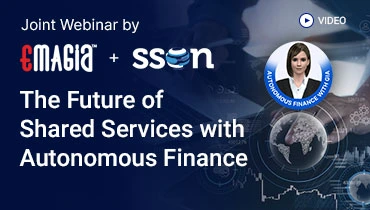Corporate Treasury Systems have become indispensable tools in modern finance departments, serving as the digital backbone of financial operations. Such platforms simplify and automate intricate treasury operations like managing liquidity, handling payments, monitoring investments, and controlling financial risks. In an era of increasing financial volatility and globalization, effective treasury management is not just desirable—it’s critical for business resilience and strategic growth.
What Are Corporate Treasury Systems?
Corporate Treasury Systems (CTS), often referred to as Treasury Management Systems (TMS), are specialized software platforms designed to manage a company’s financial operations. They help oversee cash movement, enhance liquidity performance, reduce exposure to financial risks, and support regulatory compliance. CTS provide real-time data insights, enabling informed decision-making and more efficient treasury operations.
Why Corporate Treasury Systems Matter
With the growing complexity of financial markets, companies must have better control and visibility over their financial assets. CTS play a crucial role in enhancing operational efficiency, reducing manual errors, and aligning treasury activities with business strategy. Whether it’s navigating FX volatility, managing debt, or optimizing working capital, a robust TMS provides the necessary infrastructure for corporate finance teams.
Key Modules of Corporate Treasury Systems
Cash and Liquidity Management
Real-time tracking of cash positions across accounts and regions ensures businesses can optimize liquidity and avoid unnecessary borrowing or idle funds. Treasury systems integrate bank feeds to provide a consolidated view of all available cash, enabling timely investment and payment decisions.
Bank Account Management
Electronic Bank Account Management (eBAM) empowers organizations to efficiently handle various bank accounts and related authorizations. This includes opening, modifying, or closing accounts, managing signatories, and ensuring that permissions align with company policies. CTS ensures compliance through secure and auditable processes.
Payment Processing
CTS support global payment processing, covering domestic and international transfers, including SEPA, SWIFT, ACH, and wire transfers. They help reduce payment fraud by validating beneficiaries, monitoring high-risk transactions, and enforcing dual approvals.
Debt and Investment Management
This module tracks loan obligations, monitors interest payments, and schedules debt repayments. It also manages short-term investments to ensure that surplus cash is utilized efficiently, balancing yield with liquidity needs.
Risk Management
Corporate treasurers face risks like FX exposure, interest rate fluctuations, and credit risks. CTS assist in identifying exposures and support hedging strategies such as forwards, options, and swaps. Scenario planning and simulations help in making data-driven decisions to mitigate risks.
Accounting and Reconciliation
Corporate Treasury Systems streamline the reconciliation of bank statements by integrating directly with ERP platforms, minimizing manual tasks and enhancing the precision of financial reporting. The systems also generate journal entries and support accrual accounting for complex treasury transactions.
Trade Finance
Corporate Treasury Systems simplify the handling of letters of credit, financial guarantees, and supply chain financing, making the entire process more efficient and streamlined. They ensure that international trade transactions are secure, compliant, and optimized for working capital efficiency.
Forecasting and Analytics
Predicting cash flow positions based on historical and real-time data is essential. CTS provide advanced analytics and forecasting tools that help treasurers prepare for liquidity crunches or surplus scenarios.
Compliance and Regulatory Reporting
Modern treasury systems support regulatory frameworks such as SOX, Basel III, and EMIR. They offer audit trails, access control, and reporting features to meet local and international standards.
Cloud vs On-Premises
While cloud-based CTS offer scalability, reduced IT overhead, and rapid deployment, on-premises systems provide greater control and customization. The choice depends on a company’s risk appetite, budget, and internal capabilities.
Top Corporate Treasury Systems in the Market
Some of the leading CTS platforms include:
- Kyriba: Cloud-native with strong liquidity forecasting tools.
- ION Treasury: A flexible, module-based system equipped with centralized payment processing features.
- GTreasury: Comprehensive for mid-to-large enterprises.
- FIS Quantum: Well-suited for large enterprises and businesses operating in capital markets.
- Bottomline Technologies: Focused on payment security and compliance.
How to Choose the Right Corporate Treasury System
When selecting a CTS, consider the following factors:
- Functional coverage across all treasury domains
- Ease of integration with ERP, banks, and third-party apps
- Scalability and cloud-readiness
- Security certifications and data governance standards
- User experience and customer support
- Total cost of ownership
Implementation Strategy
CTS implementation should be treated as a transformation project. Key stages include:
- Needs assessment and stakeholder alignment
- Vendor evaluation and shortlisting
- Proof of concept and customizations
- Integration with existing financial systems
- User training and change management
- Go-live and continuous improvement
Benefits of Corporate Treasury Systems
Implementing a CTS offers several tangible benefits:
- Real-time cash visibility
- Faster and more secure payments
- Enhanced compliance and audit readiness
- Reduced operational costs through automation
- Strategic decision-making based on data insights
Challenges and How to Overcome Them
Challenges in CTS adoption include:
- Complex integrations: Use APIs and experienced partners.
- Data quality issues: Perform comprehensive data cleaning and ensure consistent formatting and standards.
- User resistance: Run awareness programs and trainings.
- Cost overruns: Adhere to a clear project scope and implement the system in structured phases.
Transforming Treasury with Emagia
Emagia offers an AI-powered Treasury Management Solution that helps businesses revolutionize their finance operations. With smart automation, deep analytics, and seamless integration, Emagia enables finance leaders to:
- Automate cash forecasting and liquidity management
- Streamline global payments and reconciliation
- Connect with banks and ERPs with minimal IT effort
- Gain real-time control over financial risk and exposure
- Scale treasury operations cost-effectively
Whether you’re a growing enterprise or a global conglomerate, Emagia adapts to your needs, helping you modernize and future-proof your treasury functions.
Frequently Asked Questions (FAQs)
What is a corporate treasury system?
A corporate treasury system is a financial software used by companies to manage cash, liquidity, payments, investments, and financial risks more efficiently.
Why do companies need a treasury management system?
Companies need a TMS to gain real-time visibility over finances, automate manual processes, reduce risks, and ensure compliance with financial regulations.
What are the top corporate treasury systems in 2026?
Top systems include Kyriba, ION Treasury, GTreasury, FIS Quantum, and Bottomline Technologies.
What is the typical cost of implementing a Treasury Management System (TMS)?
Costs vary based on features and company size, typically ranging from $50,000 to $500,000 including software, integration, and training.
Cloud TMS vs On-premises—what’s better?
Cloud-based systems offer scalability and faster deployment, while on-premises provide more control and customization.
How to choose a corporate treasury system?
Assess your business needs, integration requirements, budget, scalability, and support when evaluating vendors.
How long does implementation take?
Implementation usually takes 3 to 12 months, depending on complexity and company readiness.
Can SMEs benefit from TMS?
Yes. Many modern TMS solutions are modular and scalable, making them suitable for small and medium-sized businesses.



